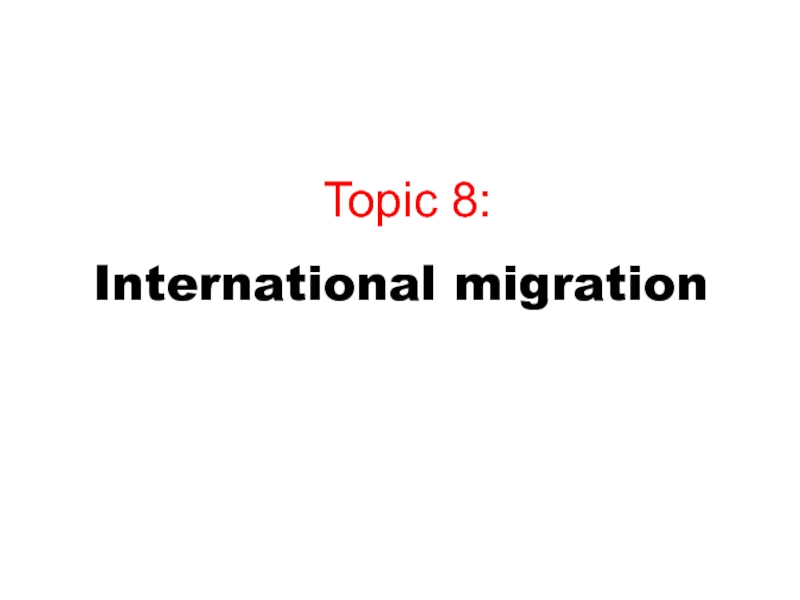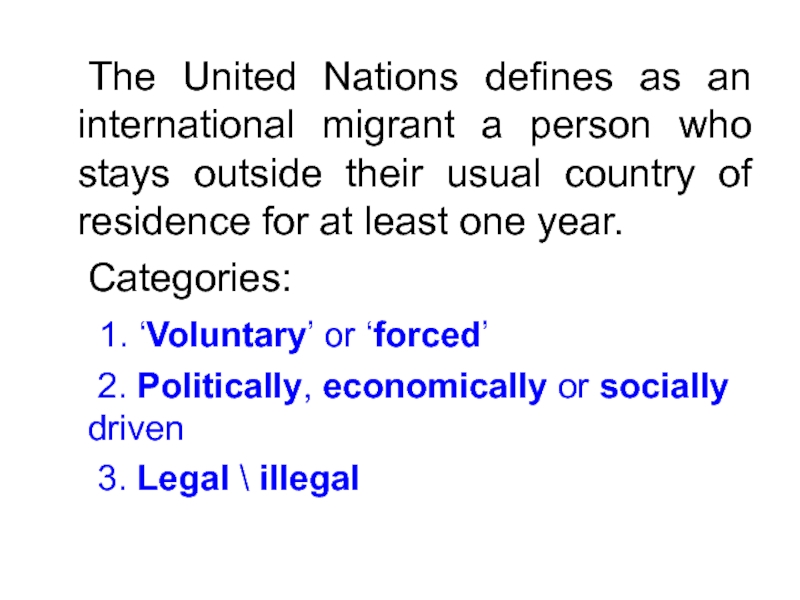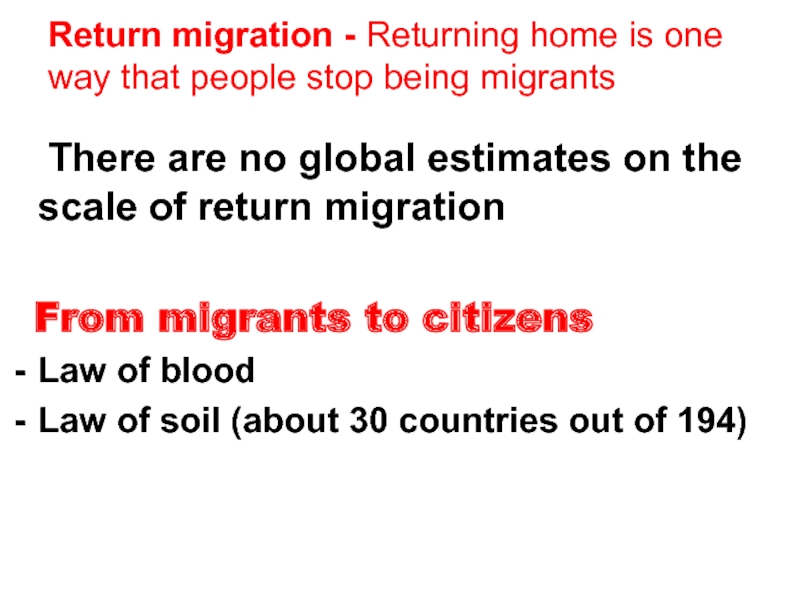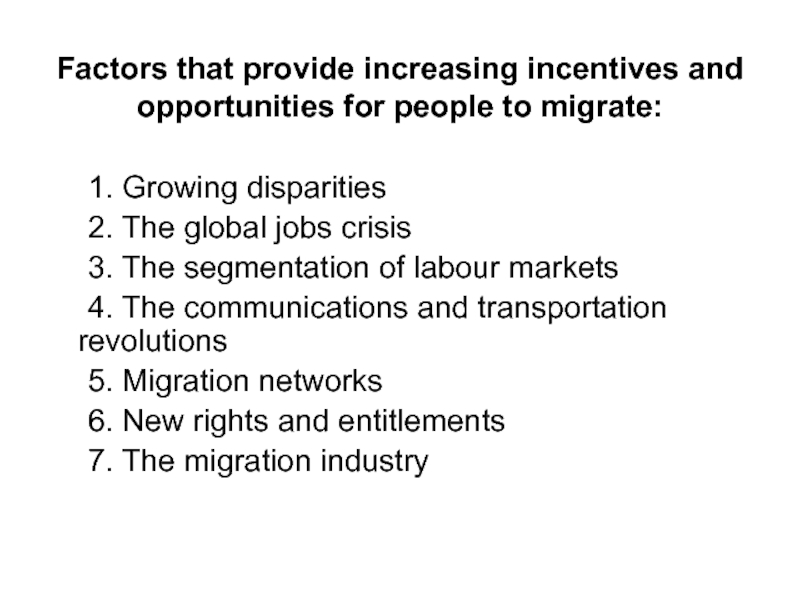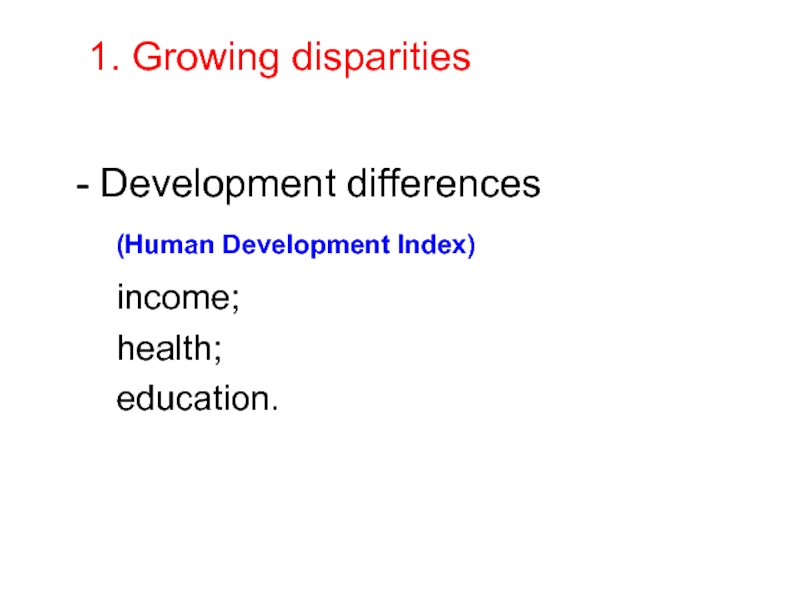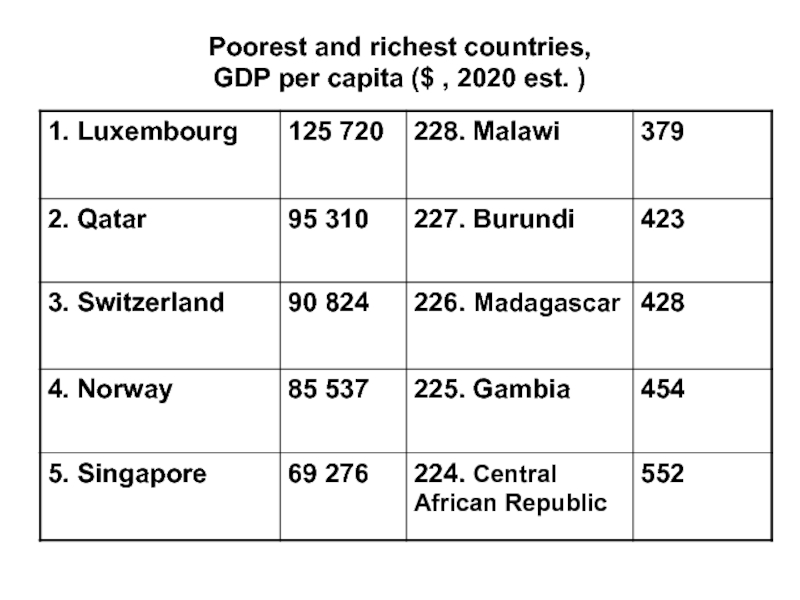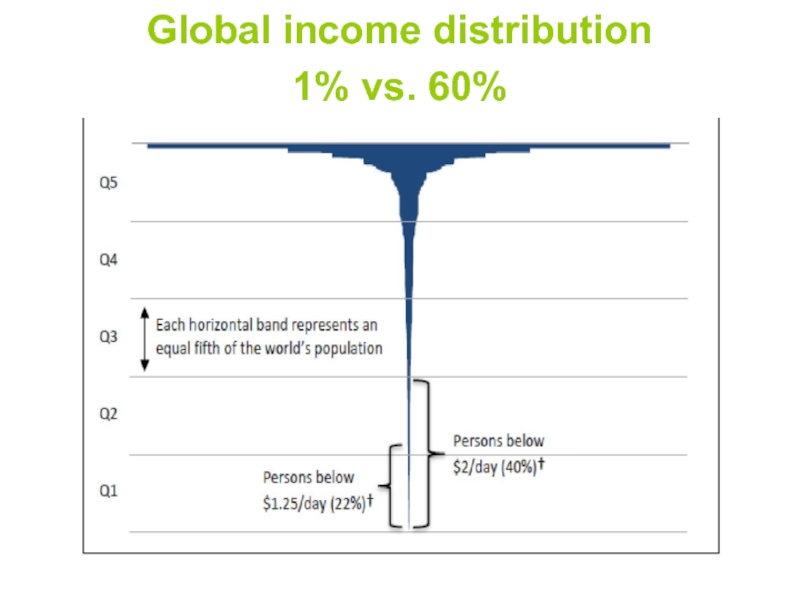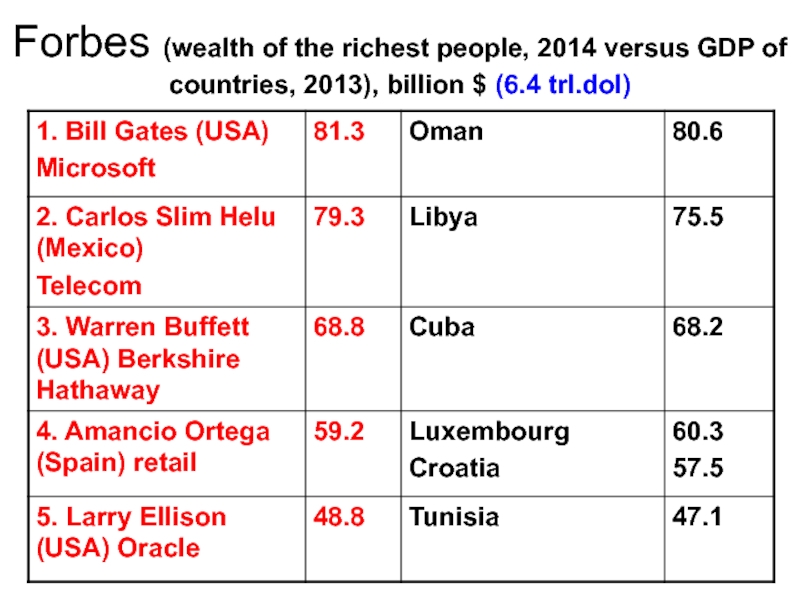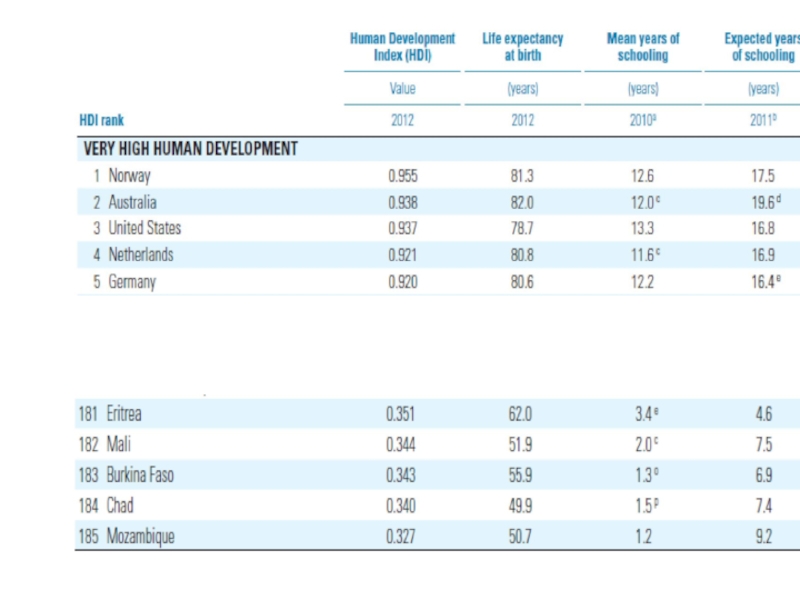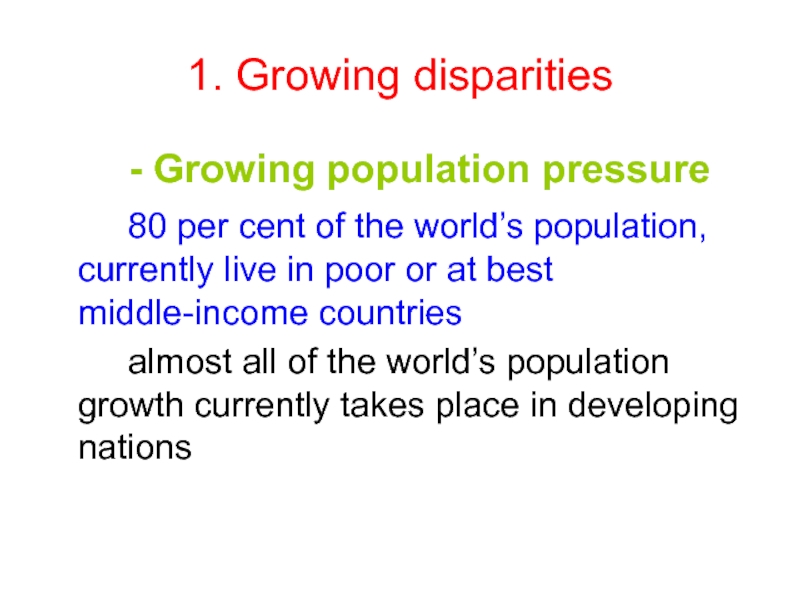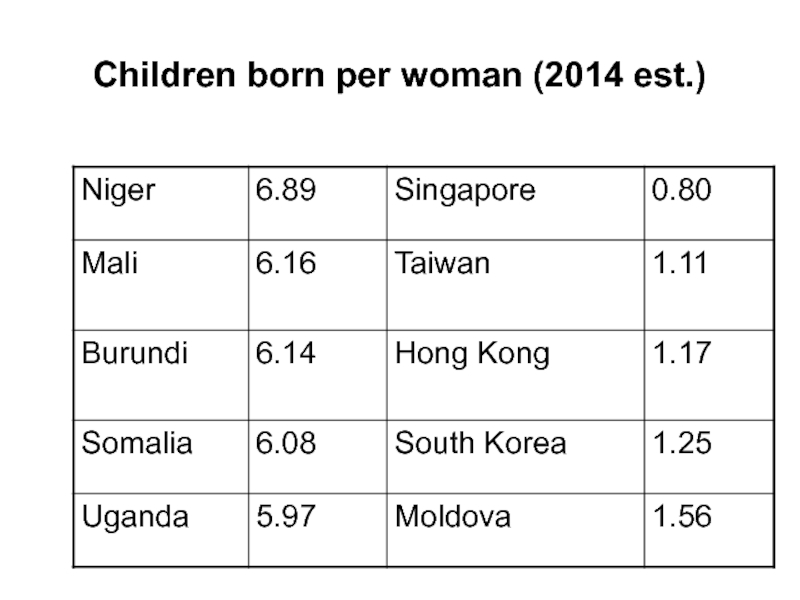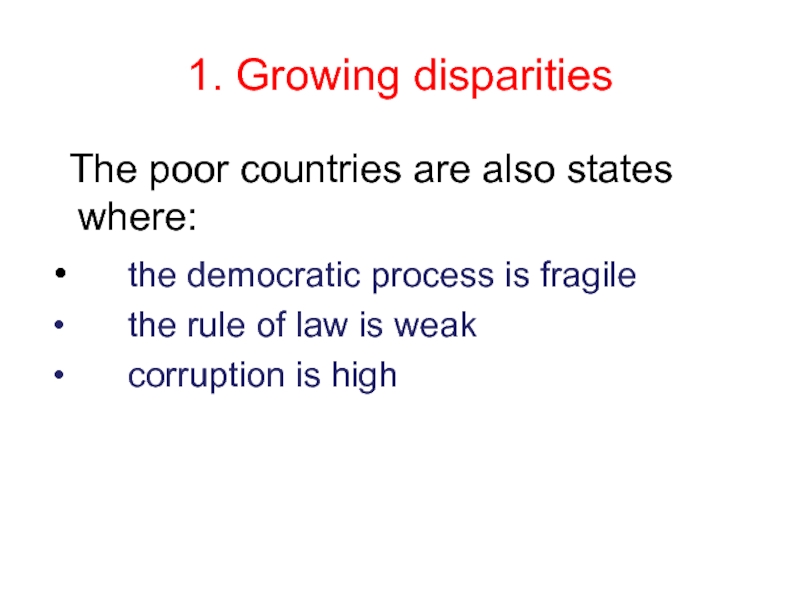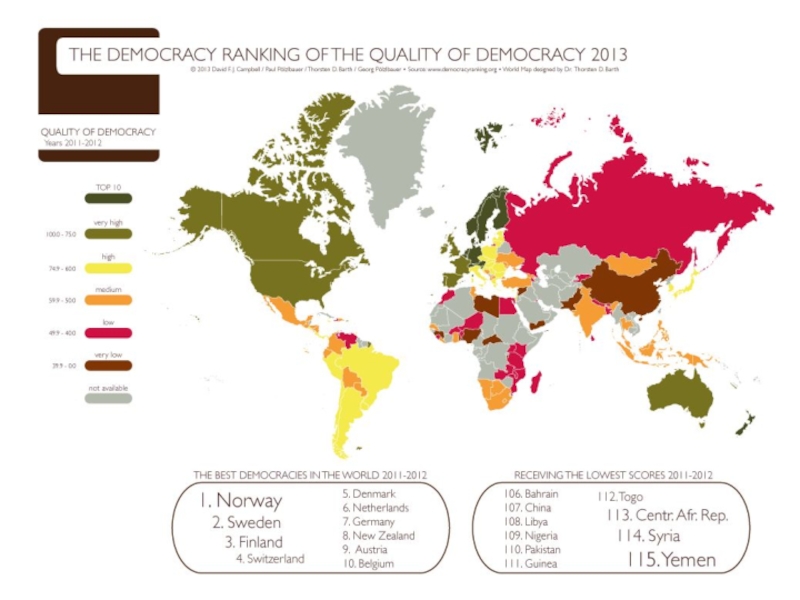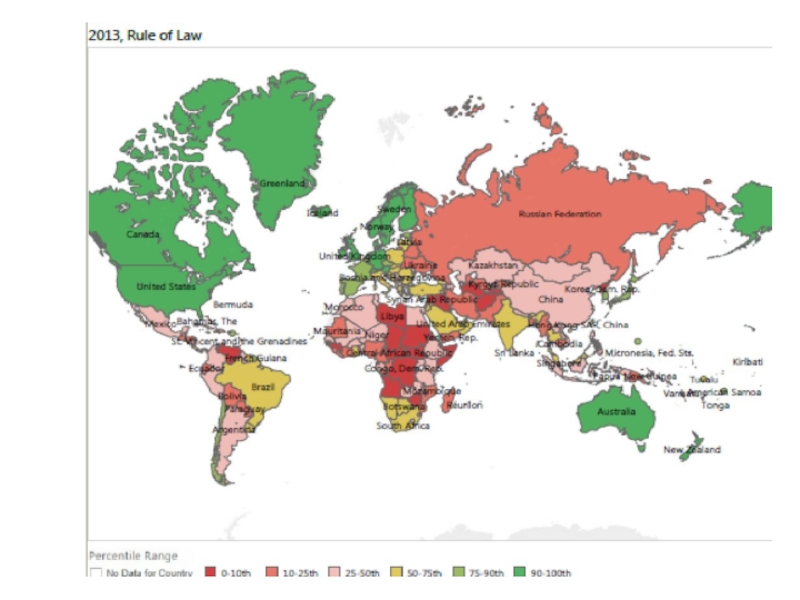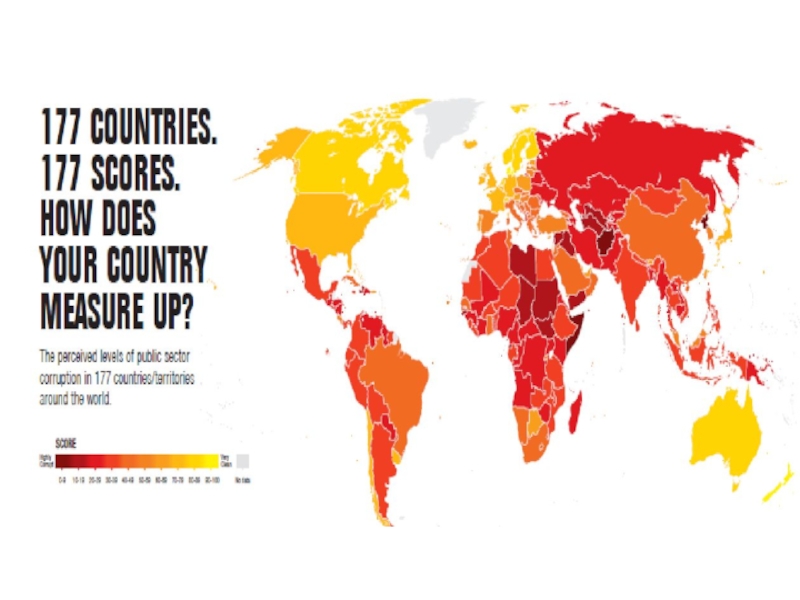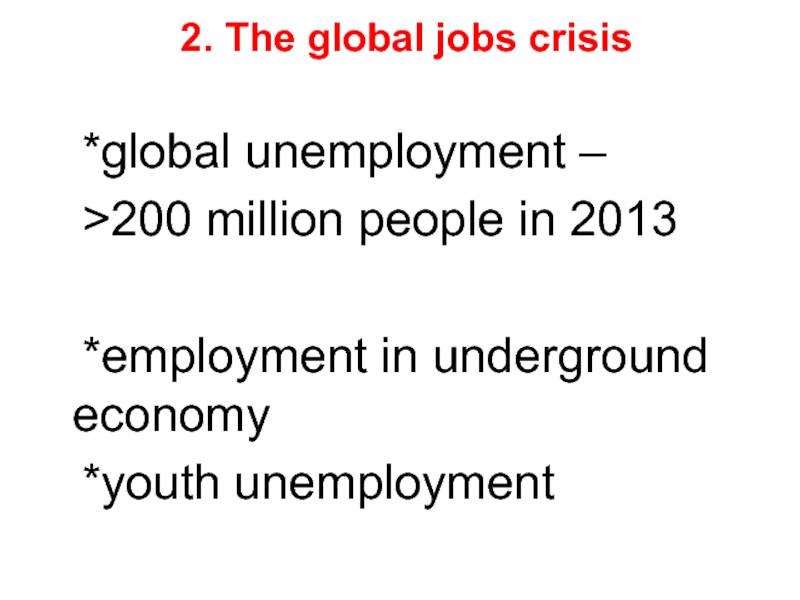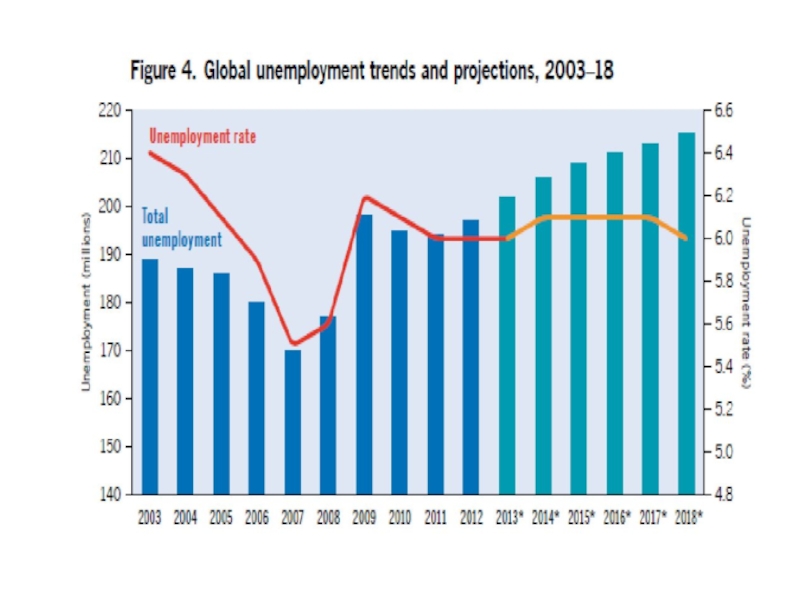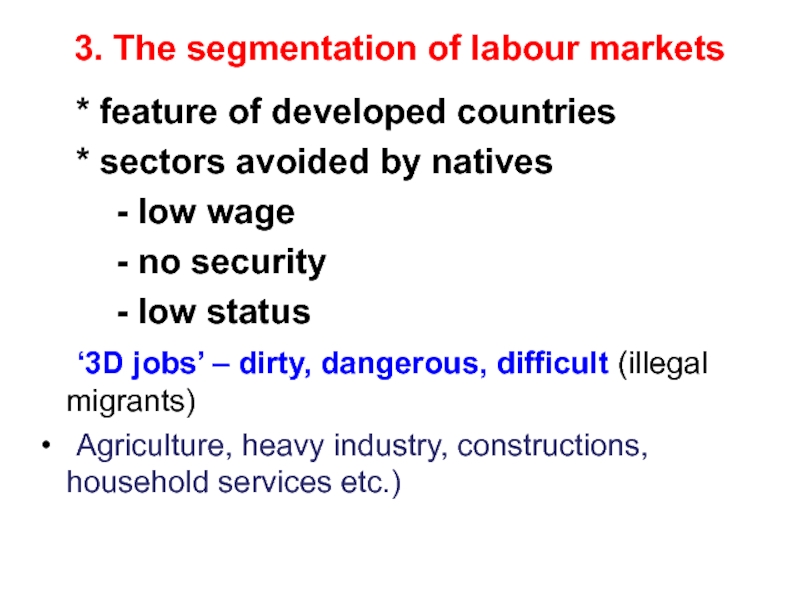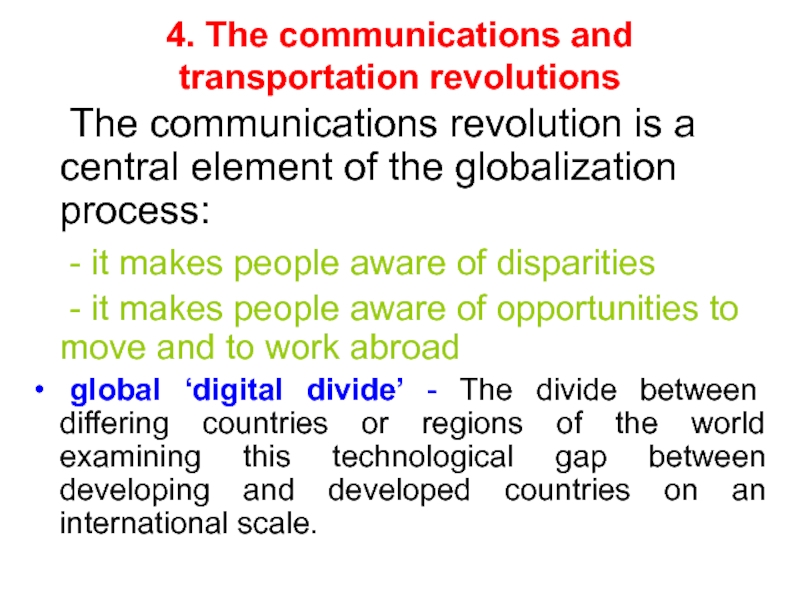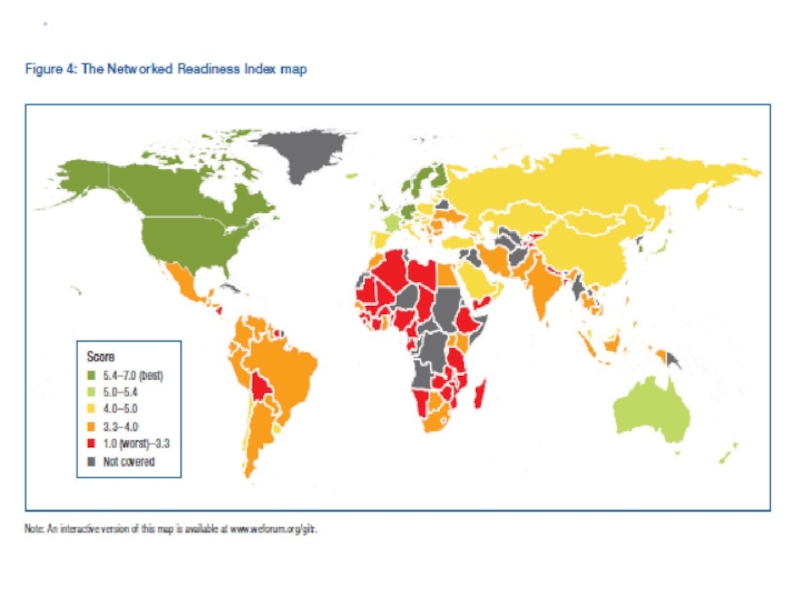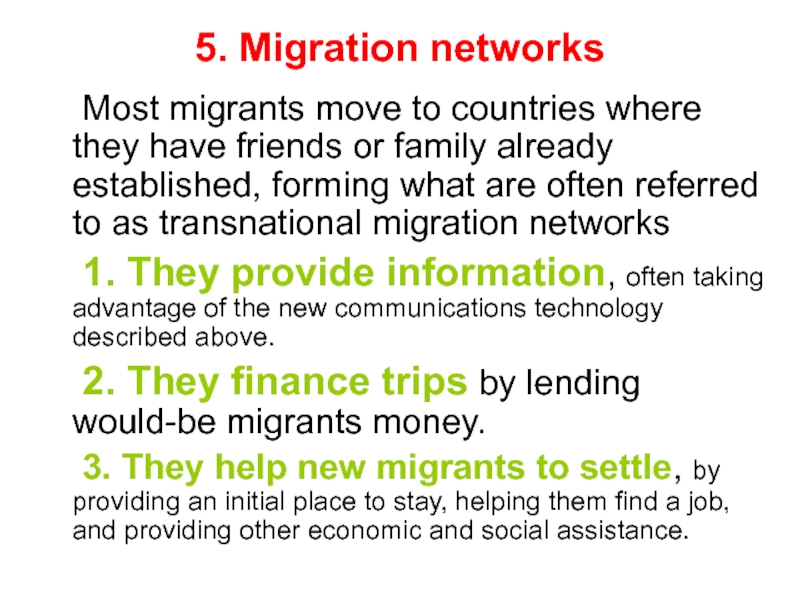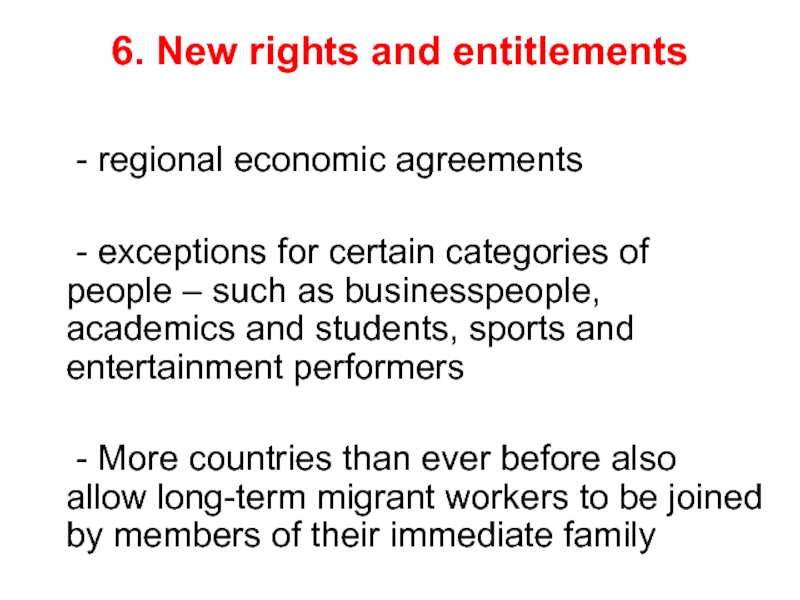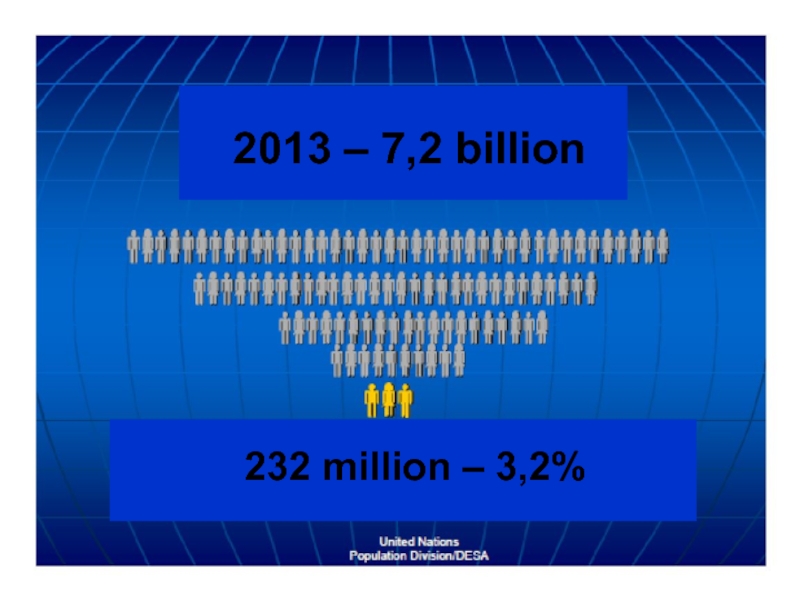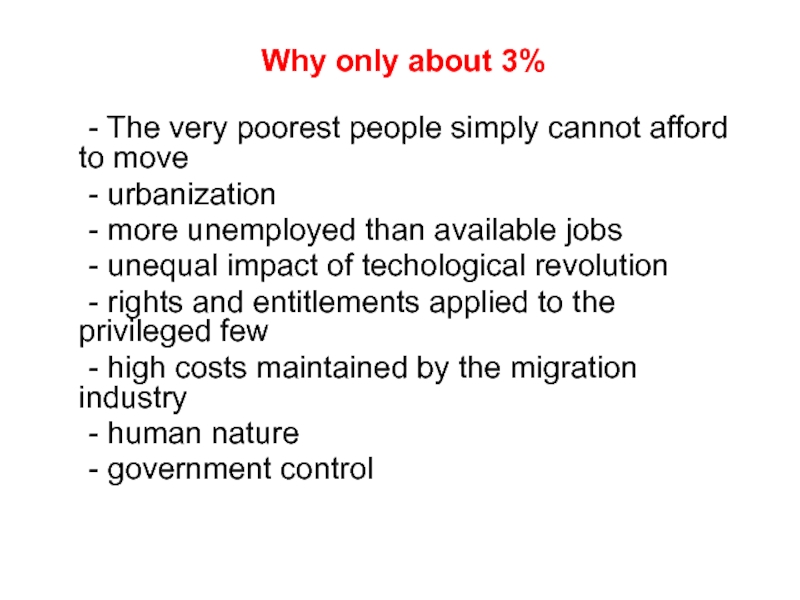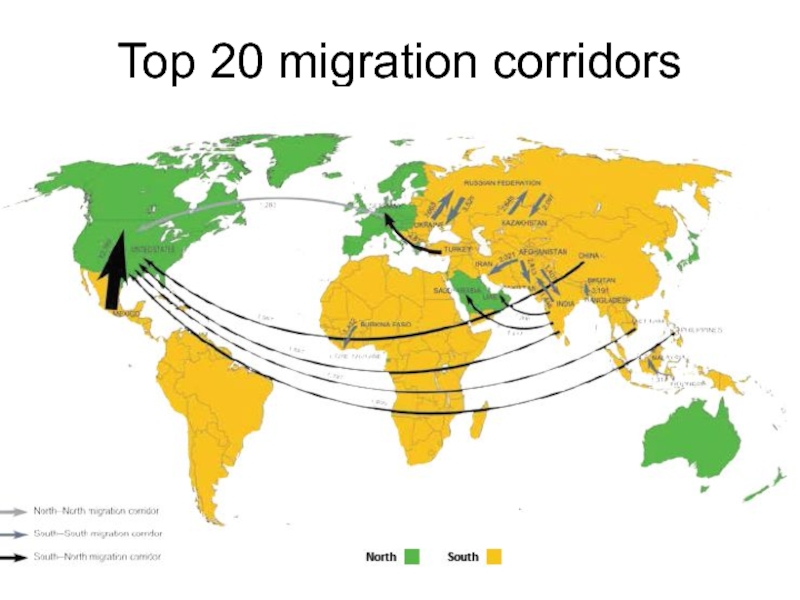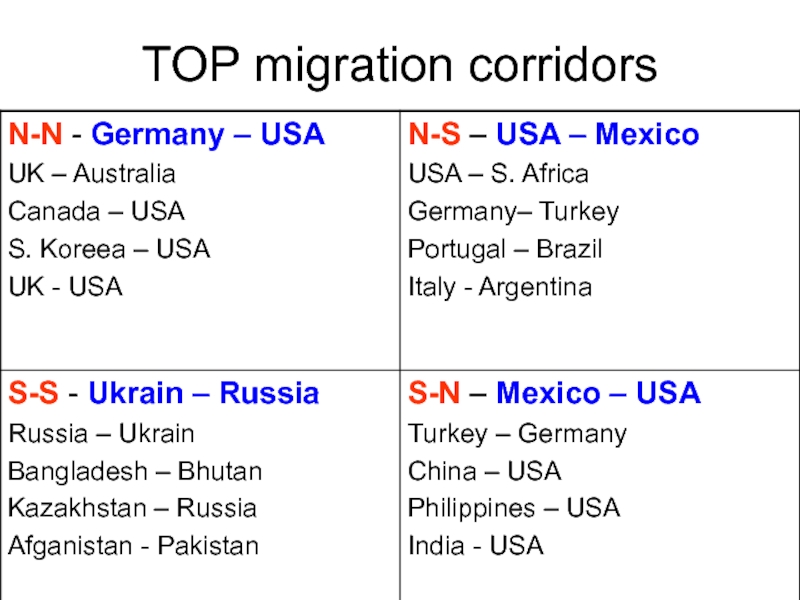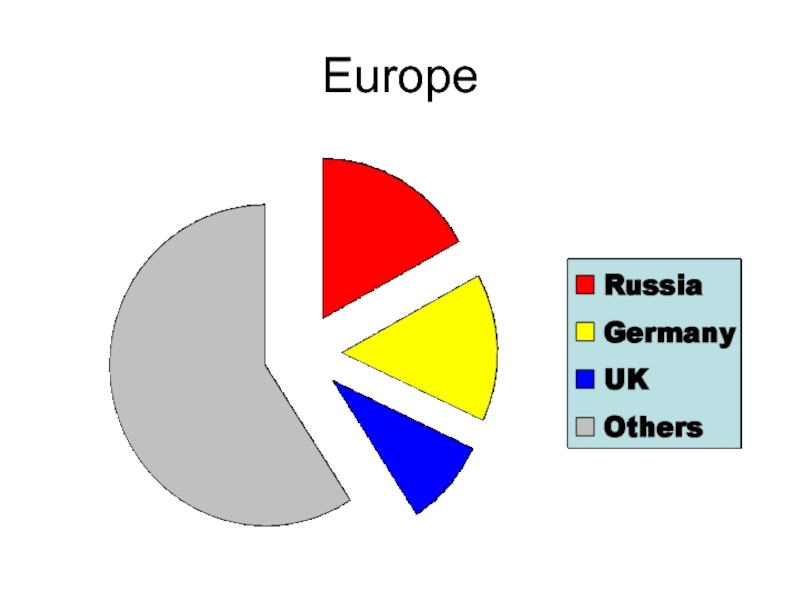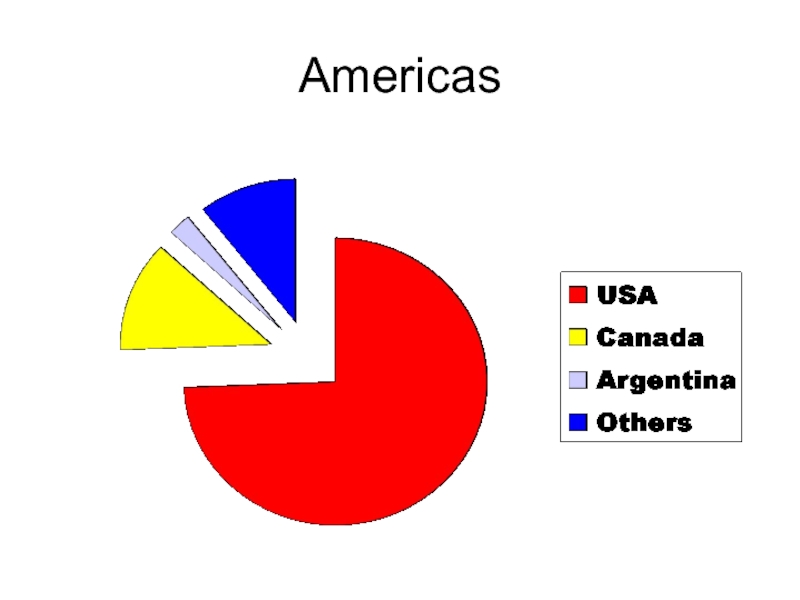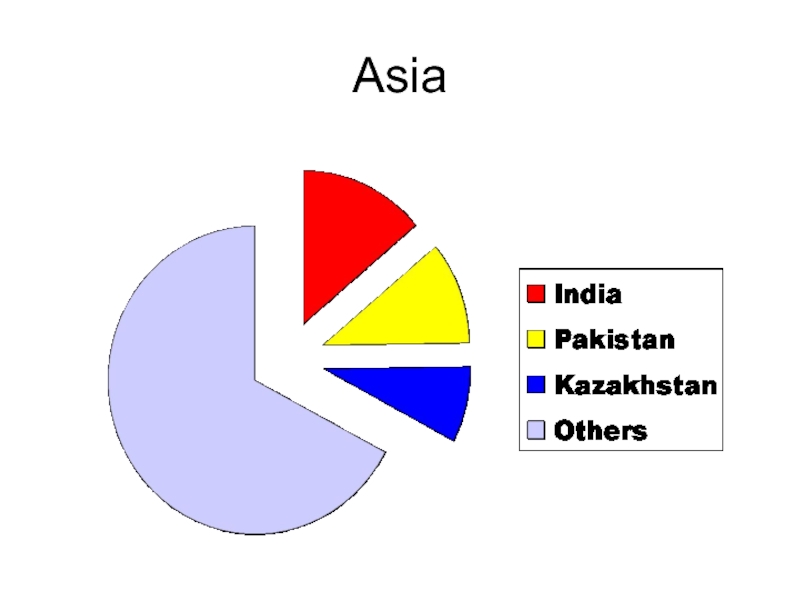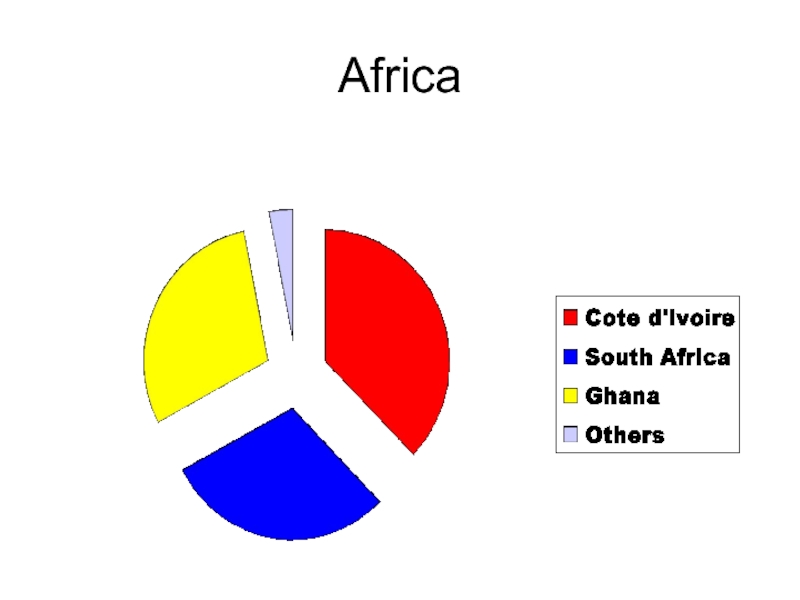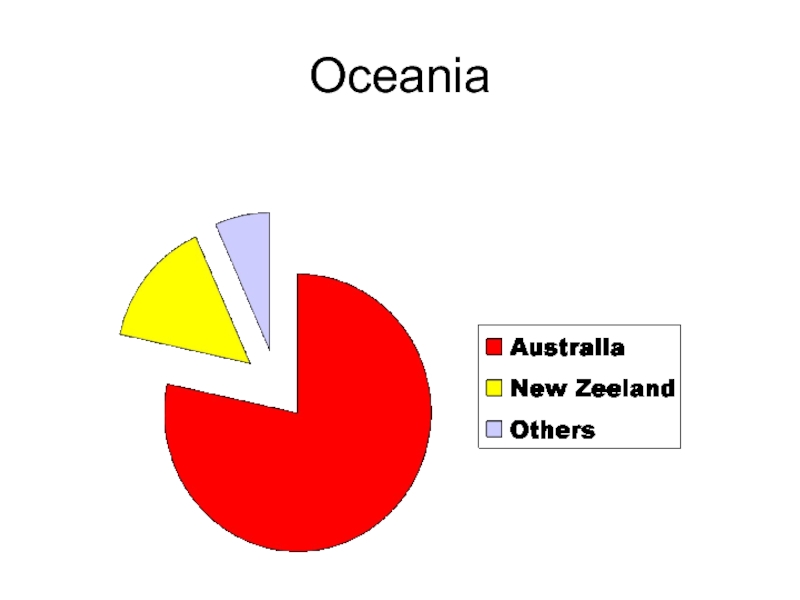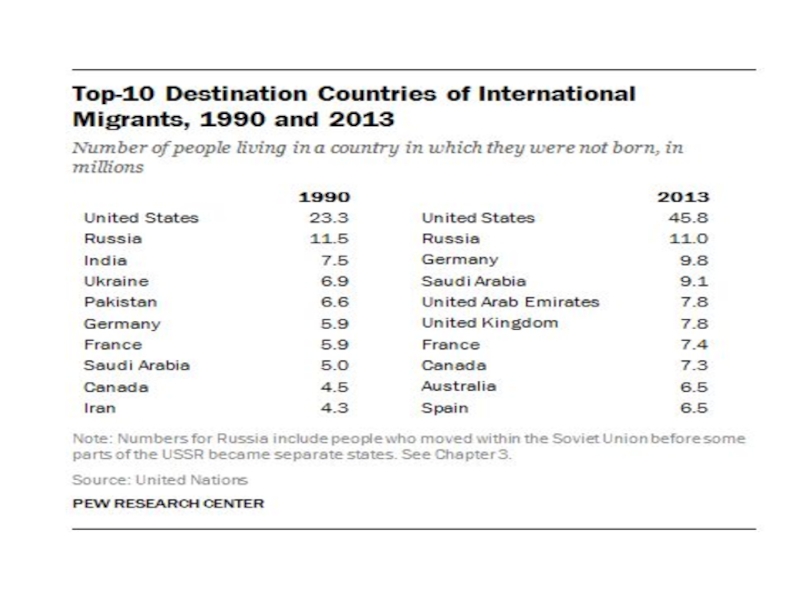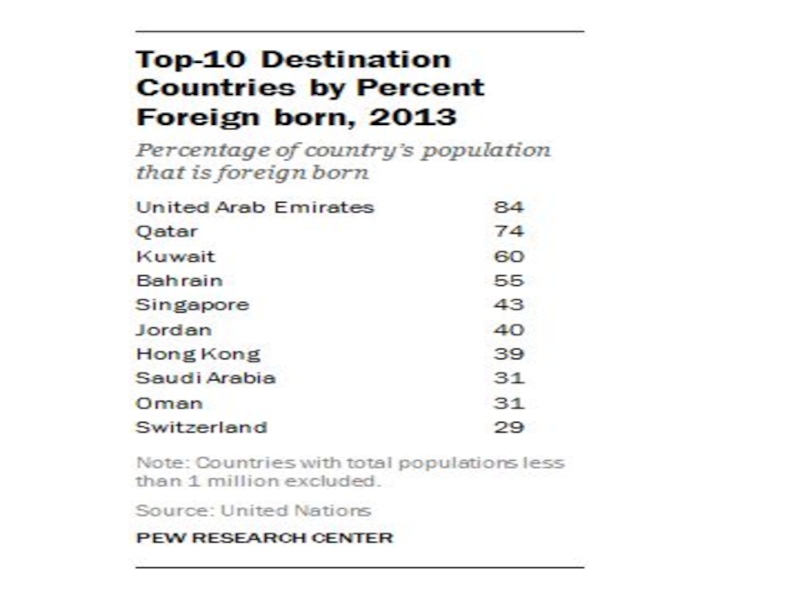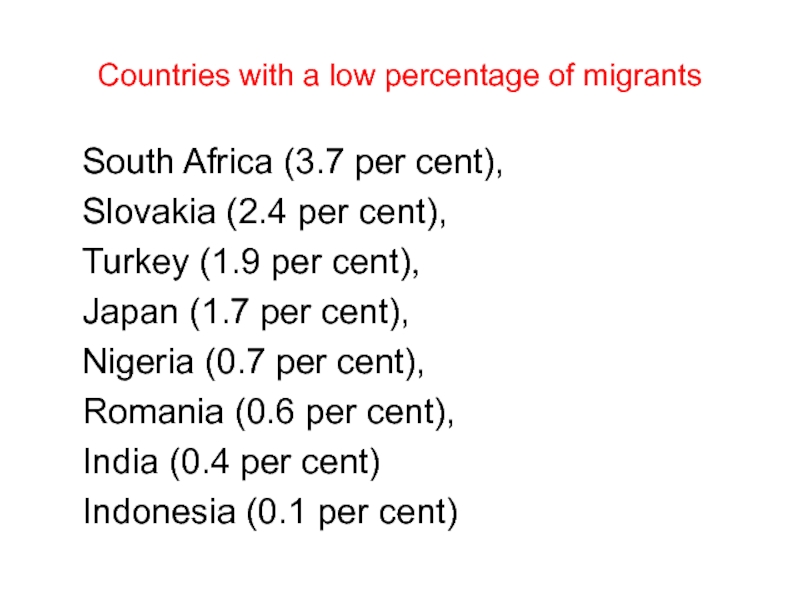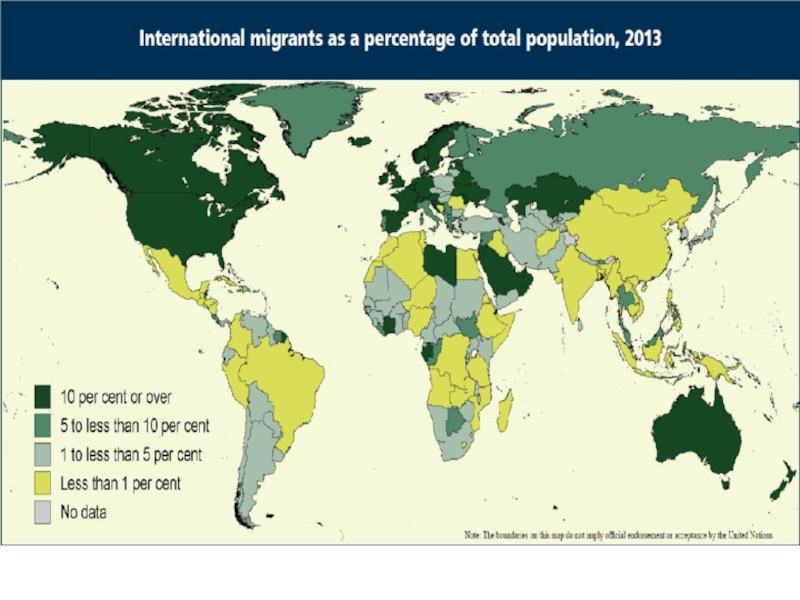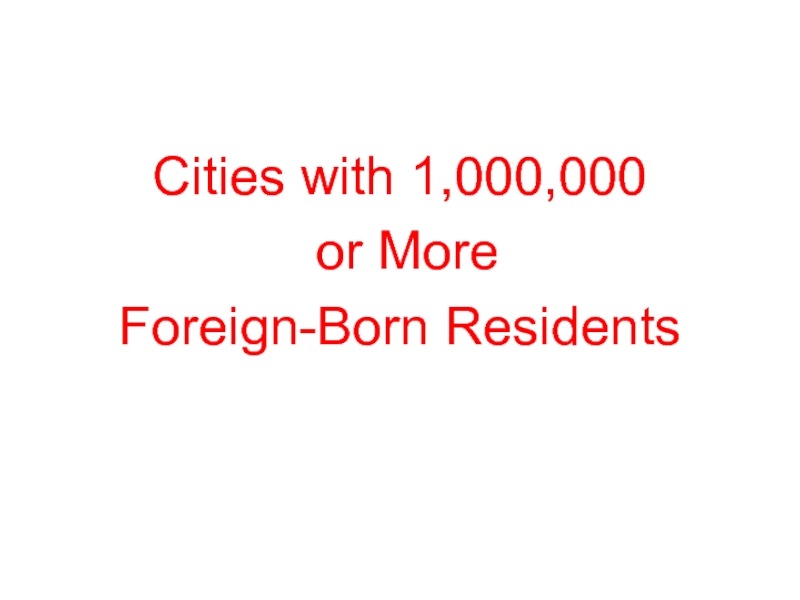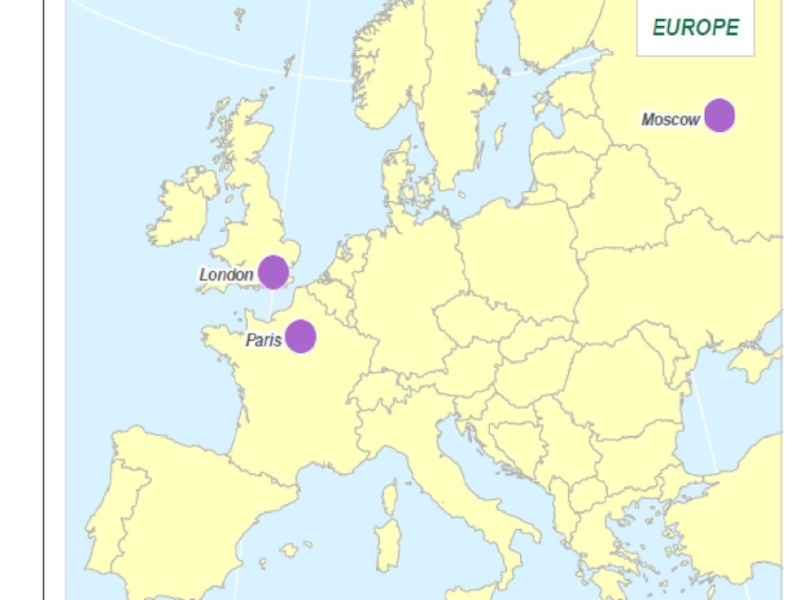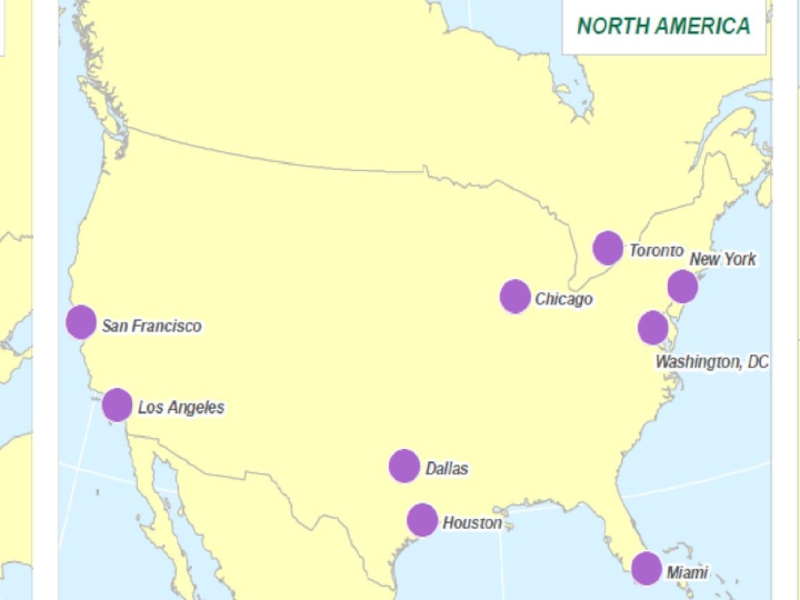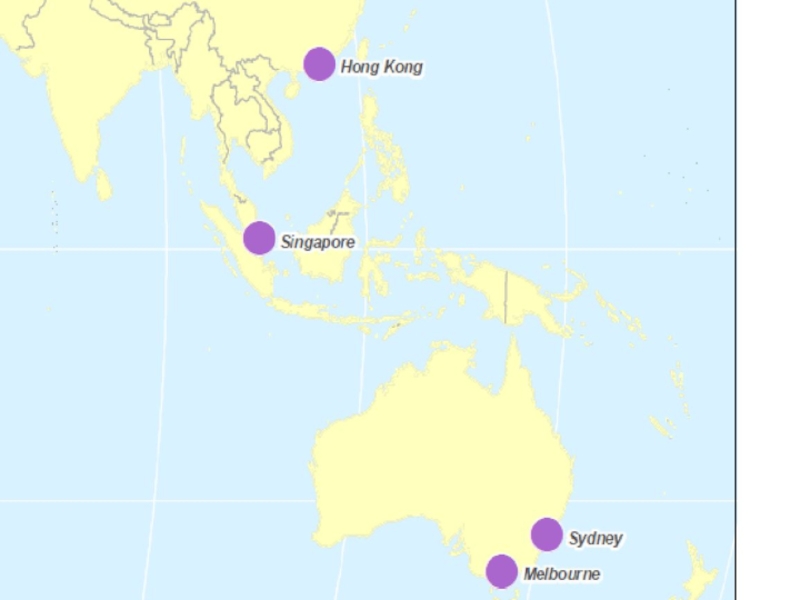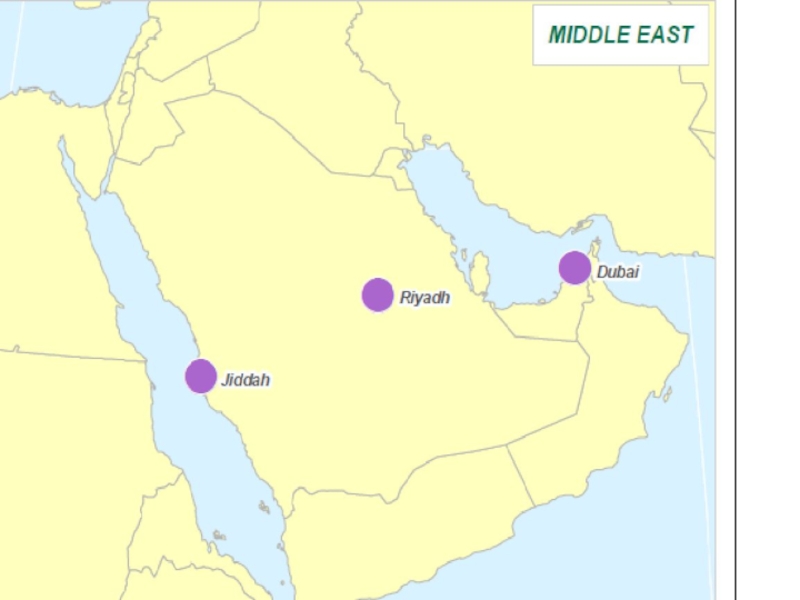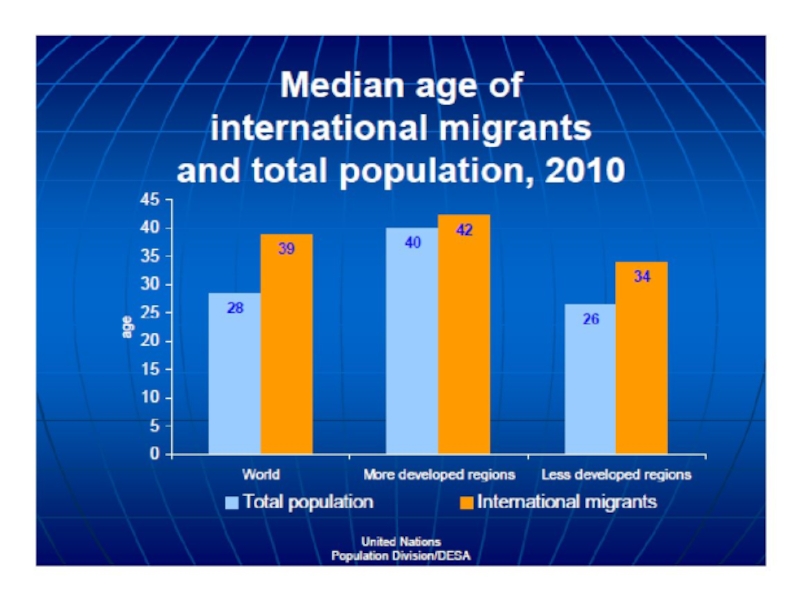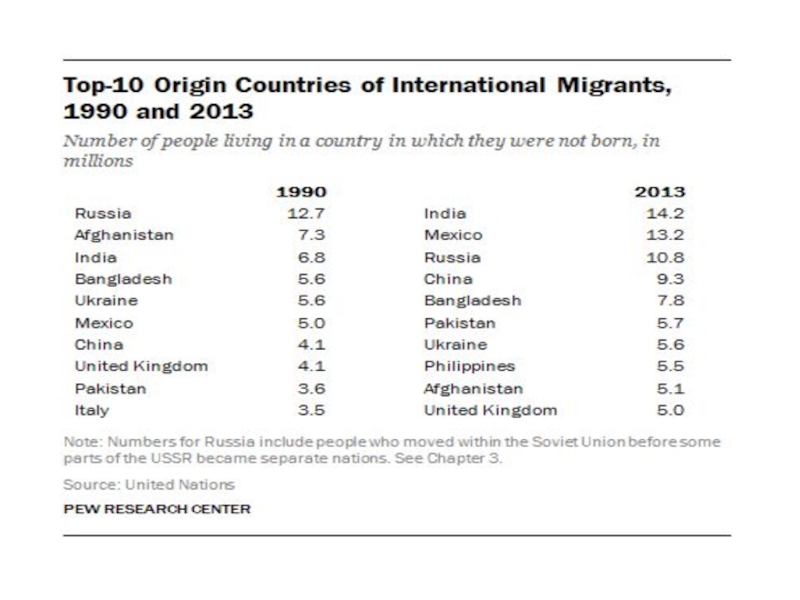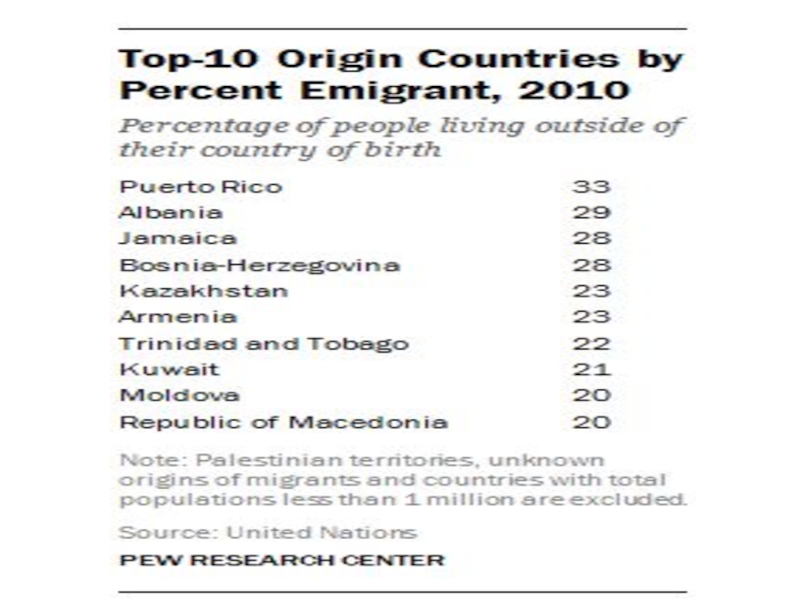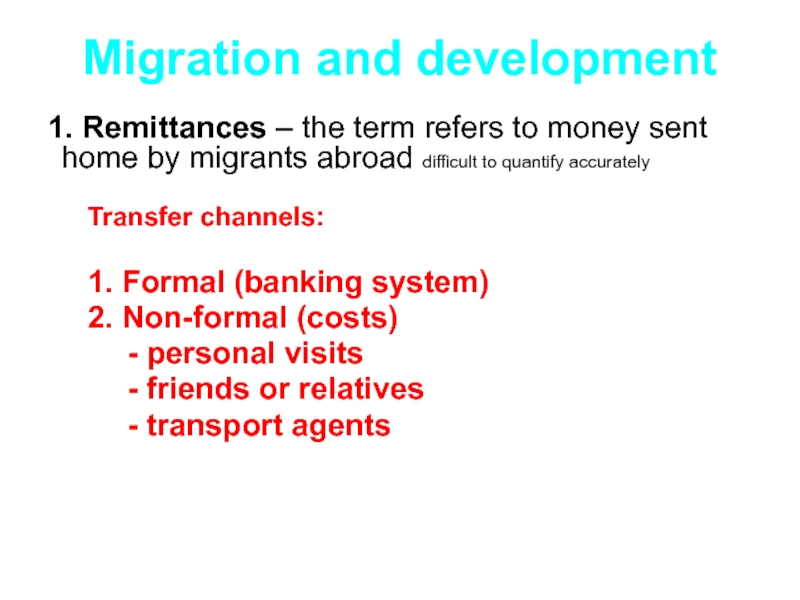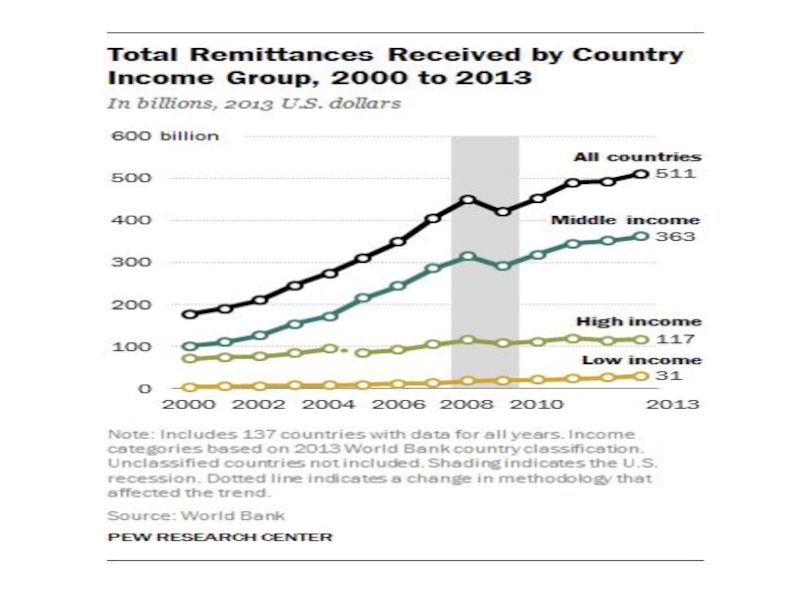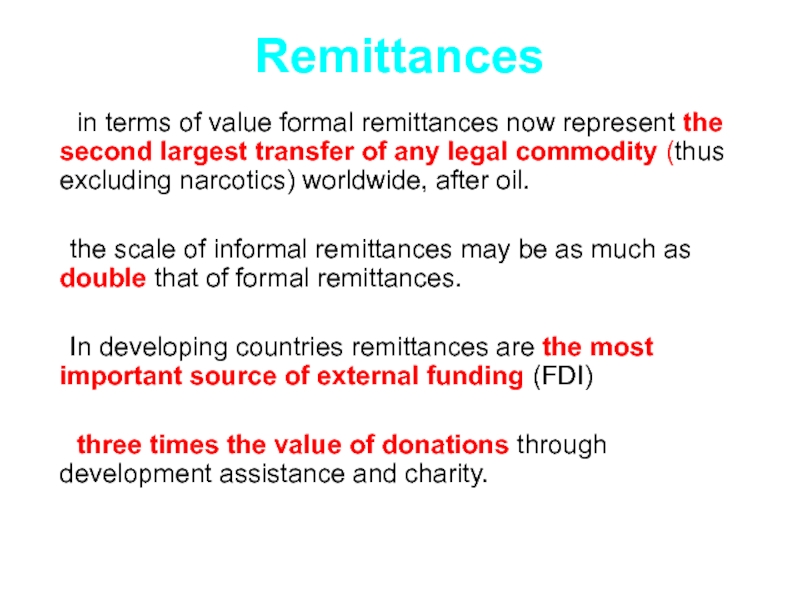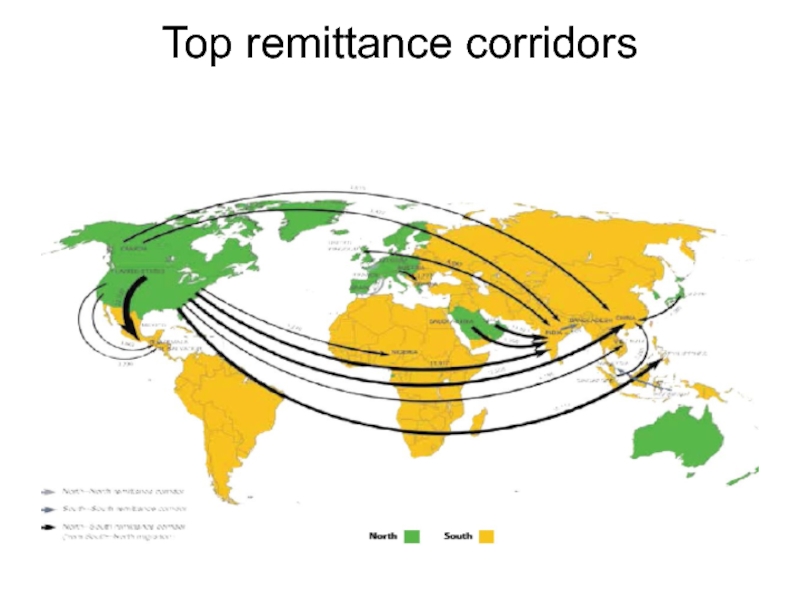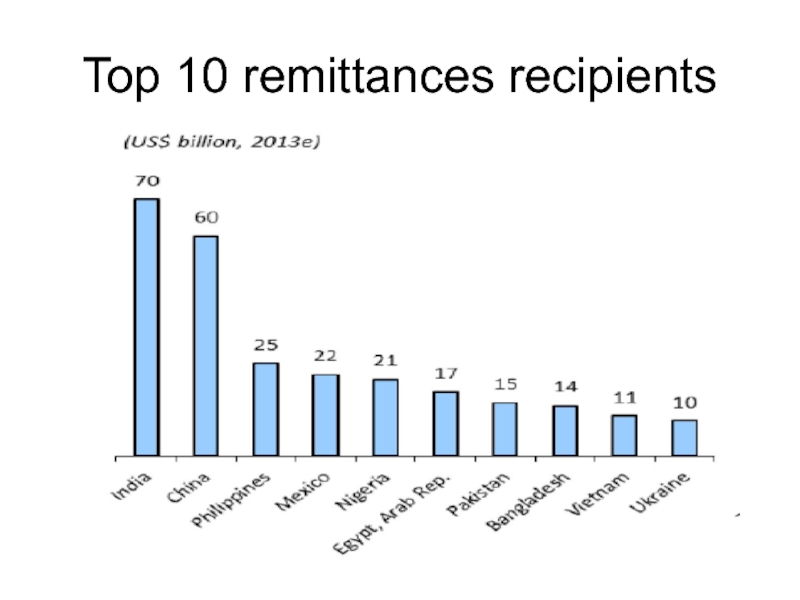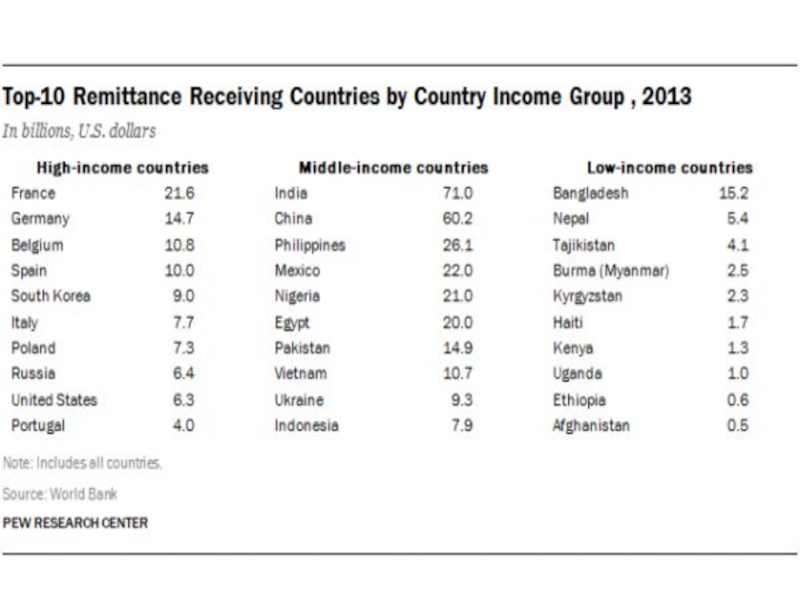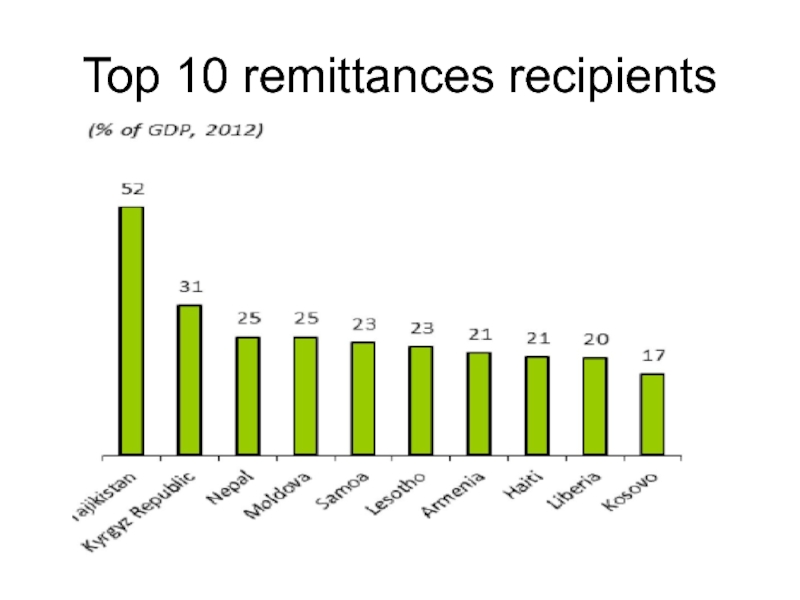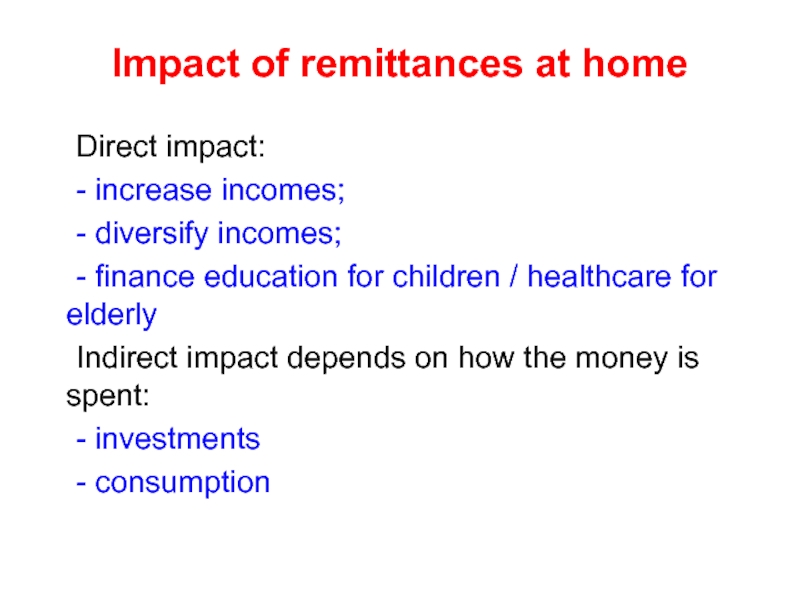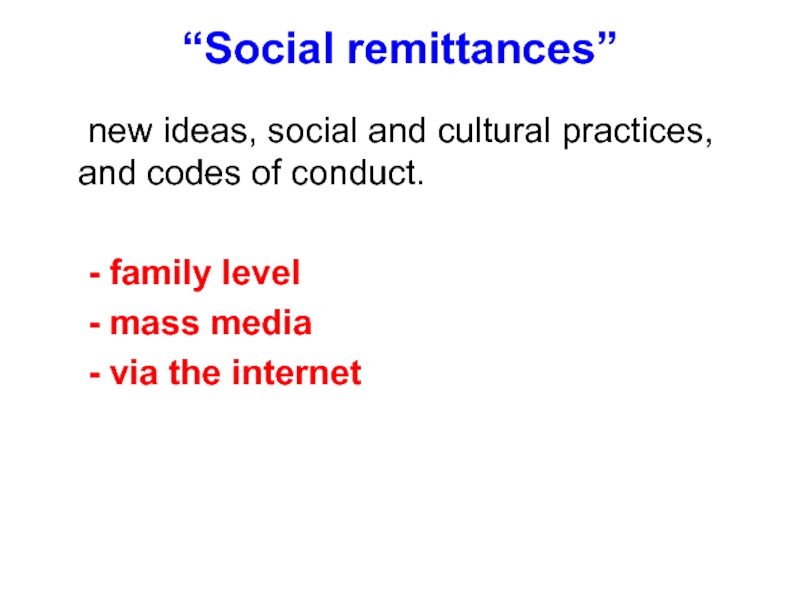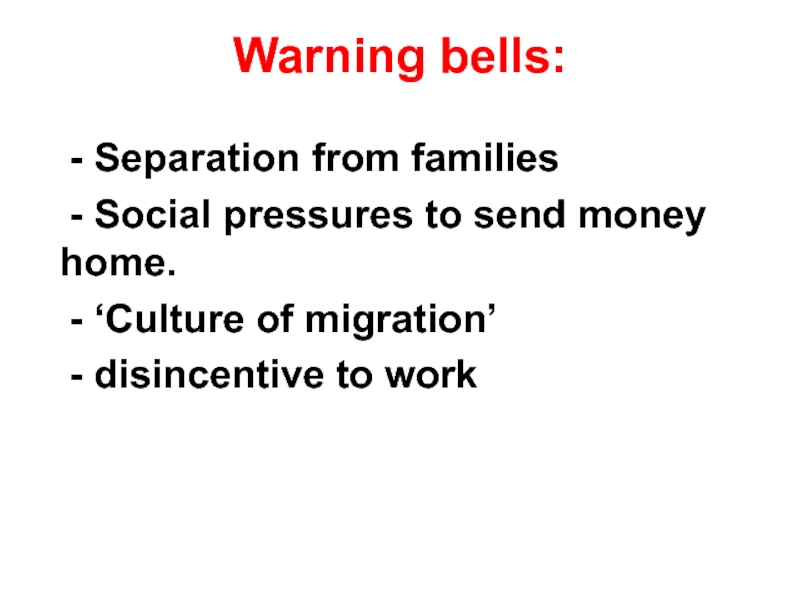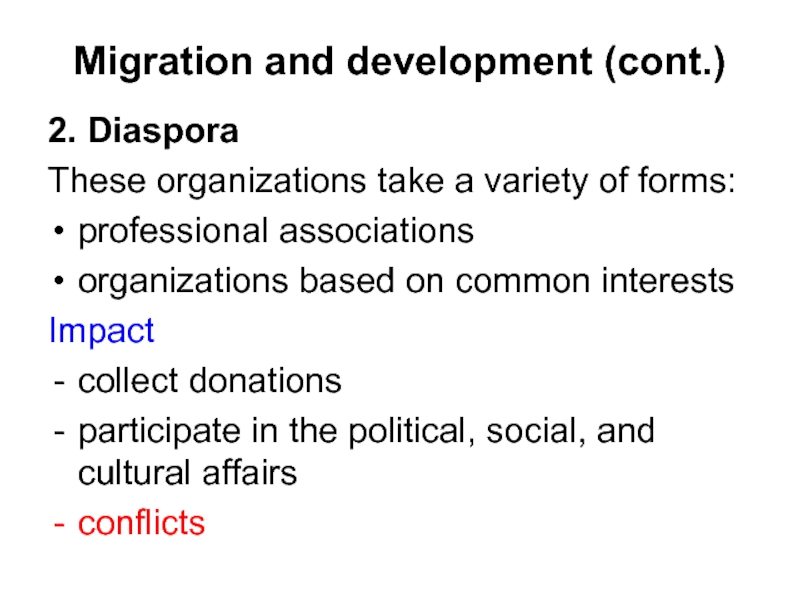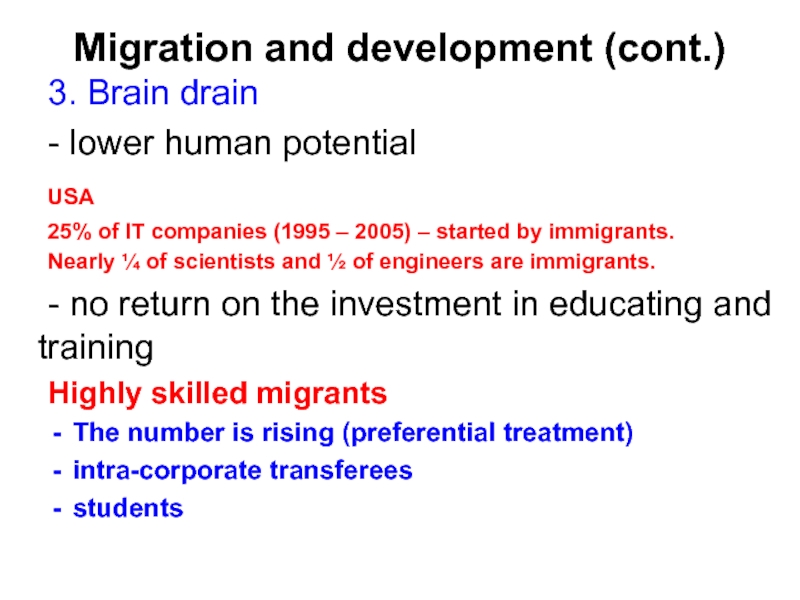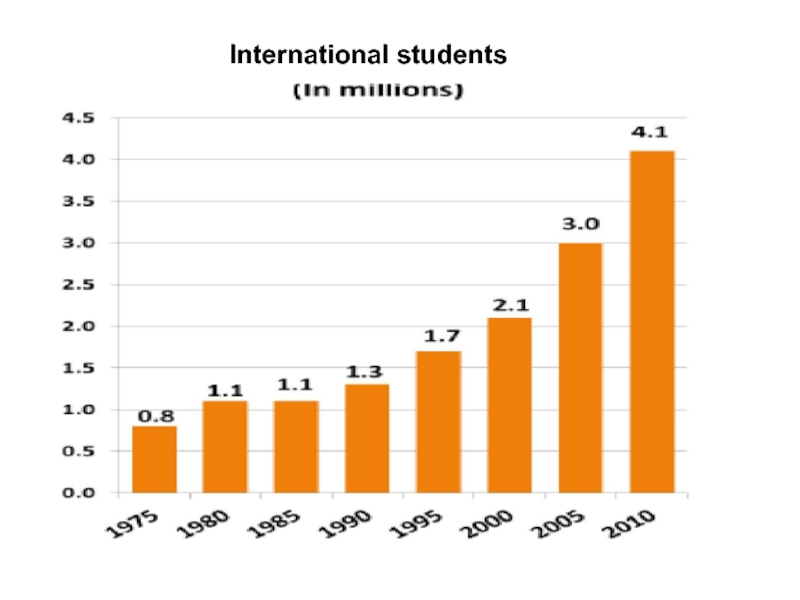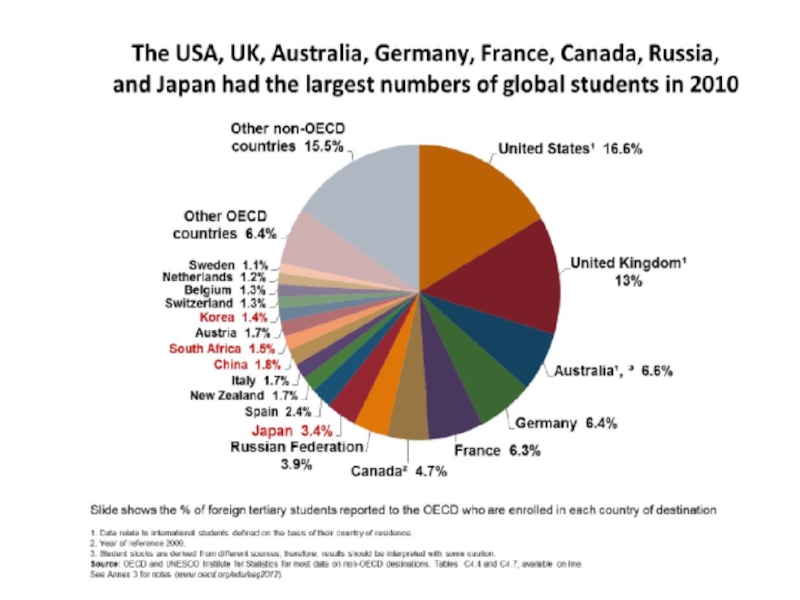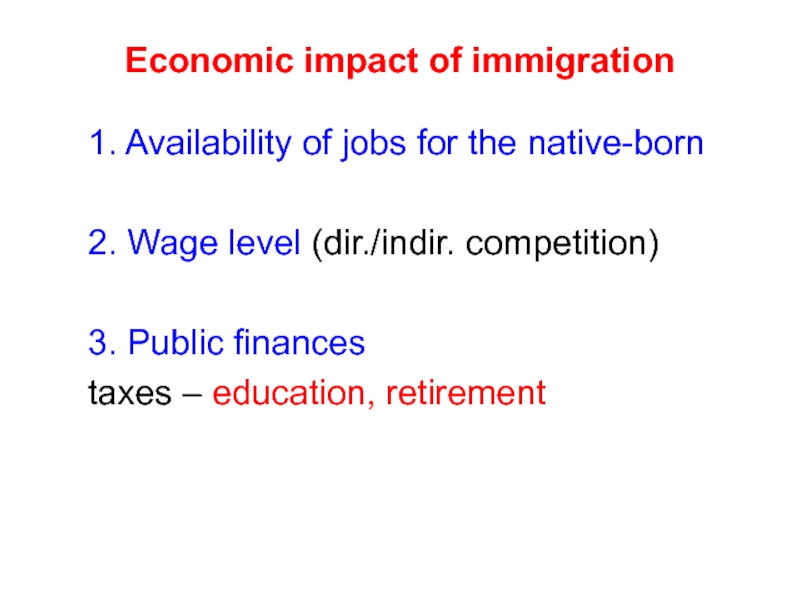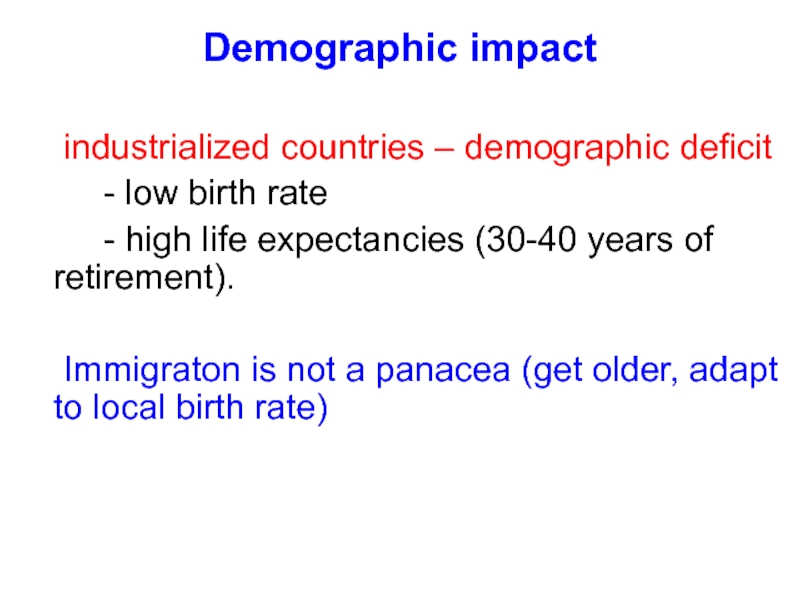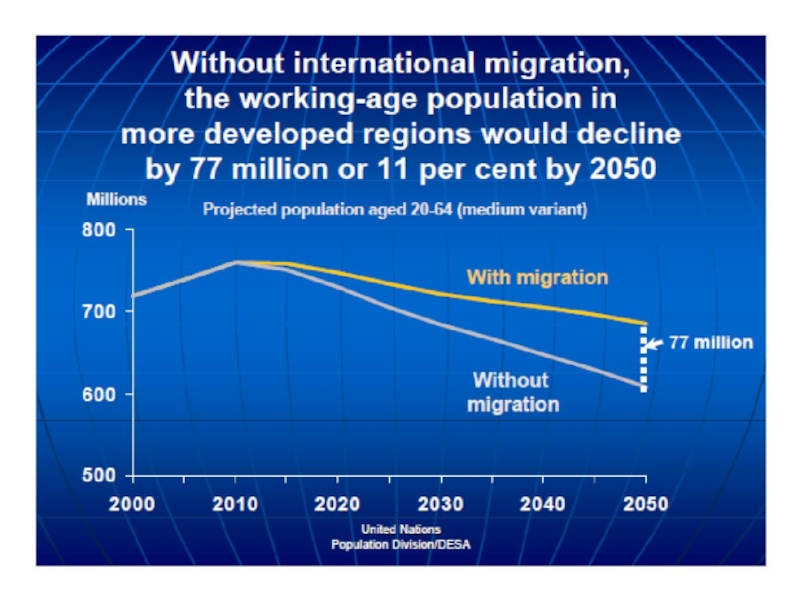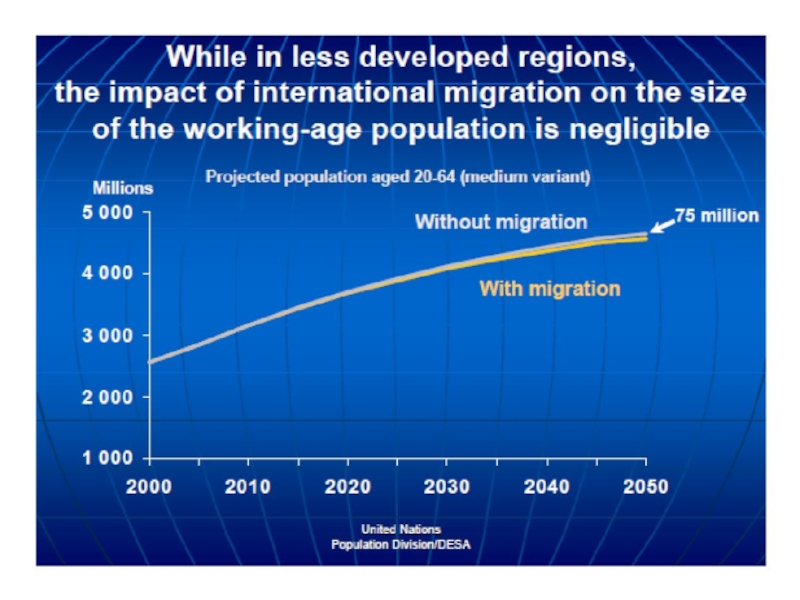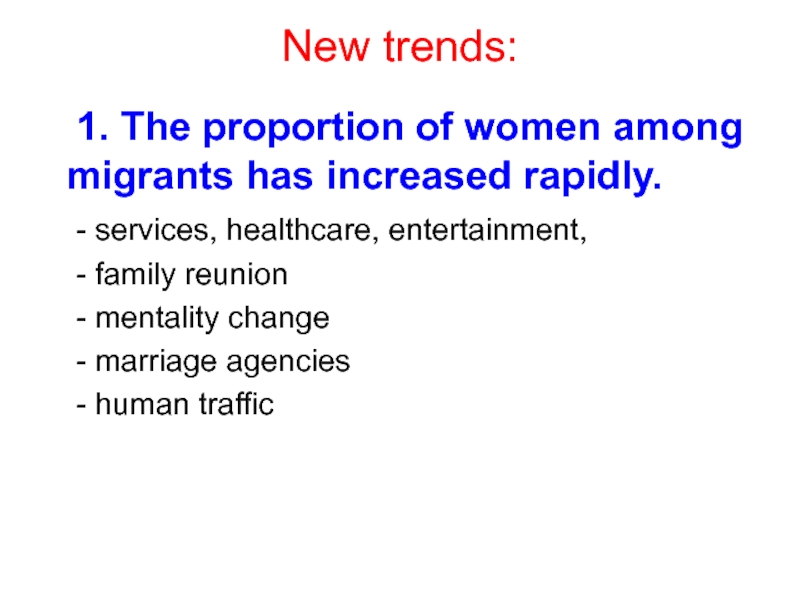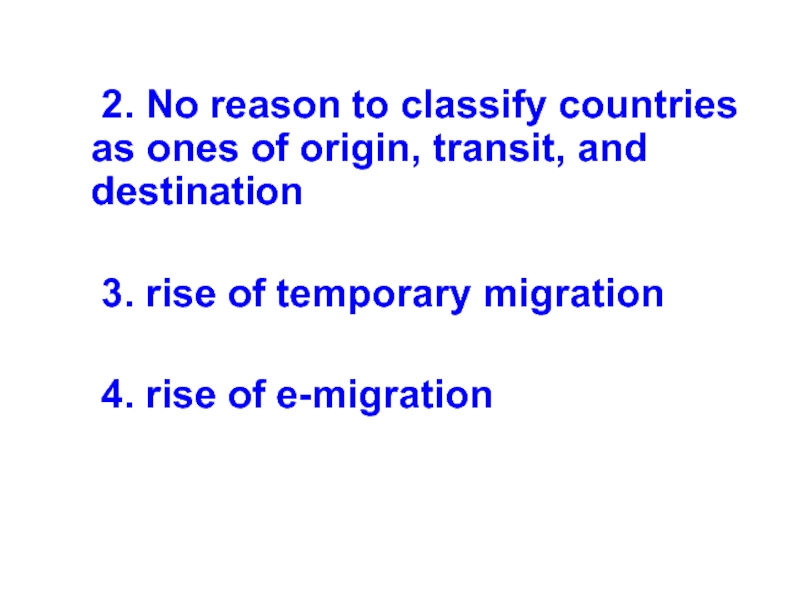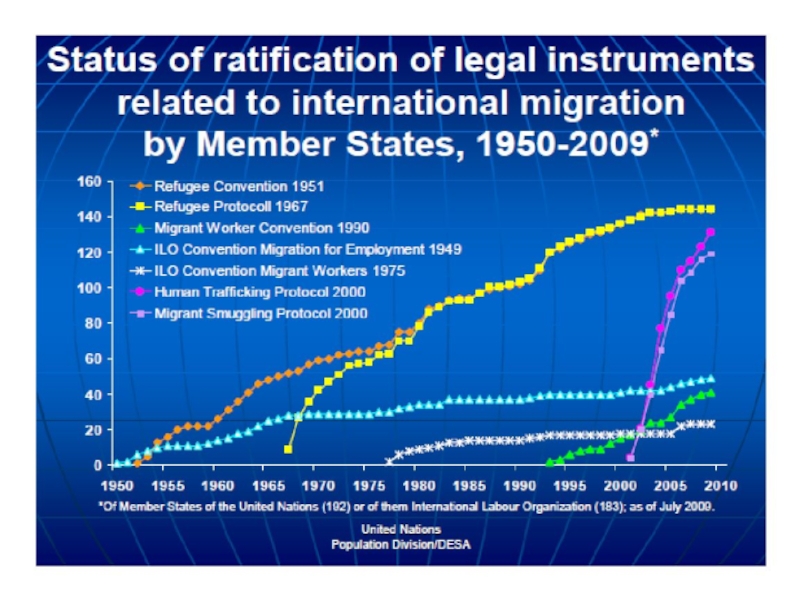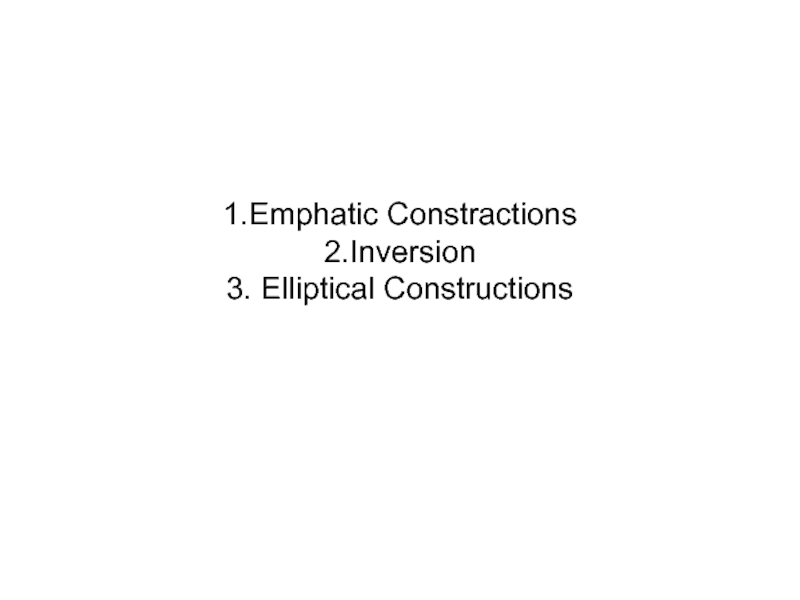- Главная
- Разное
- Дизайн
- Бизнес и предпринимательство
- Аналитика
- Образование
- Развлечения
- Красота и здоровье
- Финансы
- Государство
- Путешествия
- Спорт
- Недвижимость
- Армия
- Графика
- Культурология
- Еда и кулинария
- Лингвистика
- Английский язык
- Астрономия
- Алгебра
- Биология
- География
- Детские презентации
- Информатика
- История
- Литература
- Маркетинг
- Математика
- Медицина
- Менеджмент
- Музыка
- МХК
- Немецкий язык
- ОБЖ
- Обществознание
- Окружающий мир
- Педагогика
- Русский язык
- Технология
- Физика
- Философия
- Химия
- Шаблоны, картинки для презентаций
- Экология
- Экономика
- Юриспруденция
International migration. (Topic 8) презентация
Содержание
- 1. International migration. (Topic 8)
- 2. The United Nations defines as an international
- 3. Return migration - Returning home is one
- 4. Factors that provide increasing incentives and opportunities
- 5. 1. Growing disparities - Development differences (Human Development Index) income; health; education.
- 6. Poorest and richest countries, GDP per capita ($ , 2020 est. )
- 7. Global income distribution 1% vs. 60%
- 8. Forbes (wealth of the richest people, 2014
- 10. 1. Growing disparities - Growing population pressure
- 11. Children born per woman (2014 est.)
- 12. 1. Growing disparities The poor countries
- 16. 2. The global jobs crisis *global unemployment
- 18. 3. The segmentation of labour markets *
- 19. 4. The communications and transportation revolutions The
- 21. Proportion of households in possession of broadband enabled computers in selected countries: 2010
- 22. 4. The communications and transportation revolutions Transportation
- 23. 5. Migration networks Most migrants move to
- 24. 6. New rights and entitlements -
- 25. 7. The migration industry - labour recruiters,
- 26. 2013 – 7,2 billion 232 million – 3,2%
- 27. Why only about 3% - The very
- 29. Top 20 migration corridors
- 30. TOP migration corridors
- 31. Europe
- 32. Americas
- 33. Asia
- 34. Middle East
- 35. Africa
- 36. Oceania
- 39. Countries with a low percentage of migrants
- 41. Cities with 1,000,000 or More Foreign-Born Residents
- 49. Migration and development 1. Remittances – the
- 51. Remittances in terms of value formal
- 52. Top remittance corridors
- 53. Top 10 remittances recipients
- 55. Top 10 remittances recipients
- 56. Impact of remittances at home Direct impact:
- 57. “Social remittances” new ideas, social and cultural
- 58. Warning bells: - Separation from families -
- 59. Migration and development (cont.) 2. Diaspora These
- 60. Migration and development (cont.) 3. Brain drain
- 61. 2010 Over 4 mln International students
- 63. Economic impact of immigration 1. Availability of
- 64. Demographic impact industrialized countries – demographic
- 67. New trends: 1. The proportion of women
- 68. 2. No reason to classify countries as
Слайд 2 The United Nations defines as an international migrant a person who
stays outside their usual country of residence for at least one year.
Categories:
1. ‘Voluntary’ or ‘forced’
2. Politically, economically or socially driven
3. Legal \ illegal
Categories:
1. ‘Voluntary’ or ‘forced’
2. Politically, economically or socially driven
3. Legal \ illegal
Слайд 3Return migration - Returning home is one way that people stop
being migrants
There are no global estimates on the scale of return migration
From migrants to citizens
Law of blood
Law of soil (about 30 countries out of 194)
Слайд 4Factors that provide increasing incentives and opportunities for people to migrate:
1.
Growing disparities
2. The global jobs crisis
3. The segmentation of labour markets
4. The communications and transportation revolutions
5. Migration networks
6. New rights and entitlements
7. The migration industry
2. The global jobs crisis
3. The segmentation of labour markets
4. The communications and transportation revolutions
5. Migration networks
6. New rights and entitlements
7. The migration industry
Слайд 5 1. Growing disparities
- Development differences
(Human Development Index)
income;
health;
education.
Слайд 8Forbes (wealth of the richest people, 2014 versus GDP of countries,
2013), billion $ (6.4 trl.dol)
Слайд 101. Growing disparities
- Growing population pressure
80 per cent of the world’s
population, currently live in poor or at best middle-income countries
almost all of the world’s population growth currently takes place in developing nations
almost all of the world’s population growth currently takes place in developing nations
Слайд 121. Growing disparities
The poor countries are also states where:
the
democratic process is fragile
the rule of law is weak
corruption is high
the rule of law is weak
corruption is high
Слайд 162. The global jobs crisis
*global unemployment –
>200 million people in
2013
*employment in underground economy
*youth unemployment
*employment in underground economy
*youth unemployment
Слайд 183. The segmentation of labour markets
* feature of developed countries
* sectors
avoided by natives
- low wage
- no security
- low status
‘3D jobs’ – dirty, dangerous, difficult (illegal migrants)
Agriculture, heavy industry, constructions, household services etc.)
- low wage
- no security
- low status
‘3D jobs’ – dirty, dangerous, difficult (illegal migrants)
Agriculture, heavy industry, constructions, household services etc.)
Слайд 194. The communications and transportation revolutions
The communications revolution is a central
element of the globalization process:
- it makes people aware of disparities
- it makes people aware of opportunities to move and to work abroad
global ‘digital divide’ - The divide between differing countries or regions of the world examining this technological gap between developing and developed countries on an international scale.
- it makes people aware of disparities
- it makes people aware of opportunities to move and to work abroad
global ‘digital divide’ - The divide between differing countries or regions of the world examining this technological gap between developing and developed countries on an international scale.
Слайд 21Proportion of households in possession of broadband enabled computers in selected
countries: 2010
Слайд 224. The communications and transportation revolutions
Transportation revolution
- increasing range of options
for international travel
- decreasing costs
(Travelling internationally is still prohibitively expensive for the majority of the world’s population, and many face administrative obstacles such as obtaining passports and visas)
- decreasing costs
(Travelling internationally is still prohibitively expensive for the majority of the world’s population, and many face administrative obstacles such as obtaining passports and visas)
Слайд 235. Migration networks
Most migrants move to countries where they have friends
or family already established, forming what are often referred to as transnational migration networks
1. They provide information, often taking advantage of the new communications technology described above.
2. They finance trips by lending would-be migrants money.
3. They help new migrants to settle, by providing an initial place to stay, helping them find a job, and providing other economic and social assistance.
1. They provide information, often taking advantage of the new communications technology described above.
2. They finance trips by lending would-be migrants money.
3. They help new migrants to settle, by providing an initial place to stay, helping them find a job, and providing other economic and social assistance.
Слайд 246. New rights and entitlements
- regional economic agreements
- exceptions for certain
categories of people – such as businesspeople, academics and students, sports and entertainment performers
- More countries than ever before also allow long-term migrant workers to be joined by members of their immediate family
- More countries than ever before also allow long-term migrant workers to be joined by members of their immediate family
Слайд 257. The migration industry
- labour recruiters,
- immigration lawyers,
- travel
agents,
- housing providers,
- remittances agencies,
- immigration and customs officials,
- entire institutions such as the International Organization for Migration (IOM)
- NGOs that provide assistance and shelter to migrants and refugees.
(there is also an illegitimate part of the migration industry, comprising human traffickers and migrant smugglers)
- housing providers,
- remittances agencies,
- immigration and customs officials,
- entire institutions such as the International Organization for Migration (IOM)
- NGOs that provide assistance and shelter to migrants and refugees.
(there is also an illegitimate part of the migration industry, comprising human traffickers and migrant smugglers)
Слайд 27Why only about 3%
- The very poorest people simply cannot afford
to move
- urbanization
- more unemployed than available jobs
- unequal impact of techological revolution
- rights and entitlements applied to the privileged few
- high costs maintained by the migration industry
- human nature
- government control
- urbanization
- more unemployed than available jobs
- unequal impact of techological revolution
- rights and entitlements applied to the privileged few
- high costs maintained by the migration industry
- human nature
- government control
Слайд 39Countries with a low percentage of migrants
South Africa (3.7 per cent),
Slovakia (2.4 per cent),
Turkey (1.9 per cent),
Japan (1.7 per cent),
Nigeria (0.7 per cent),
Romania (0.6 per cent),
India (0.4 per cent)
Indonesia (0.1 per cent)
Слайд 49Migration and development
1. Remittances – the term refers to money sent
home by migrants abroad difficult to quantify accurately
Transfer channels:
1. Formal (banking system)
2. Non-formal (costs)
- personal visits
- friends or relatives
- transport agents
Transfer channels:
1. Formal (banking system)
2. Non-formal (costs)
- personal visits
- friends or relatives
- transport agents
Слайд 51Remittances
in terms of value formal remittances now represent the second
largest transfer of any legal commodity (thus excluding narcotics) worldwide, after oil.
the scale of informal remittances may be as much as double that of formal remittances.
In developing countries remittances are the most important source of external funding (FDI)
three times the value of donations through development assistance and charity.
the scale of informal remittances may be as much as double that of formal remittances.
In developing countries remittances are the most important source of external funding (FDI)
three times the value of donations through development assistance and charity.
Слайд 56Impact of remittances at home
Direct impact:
- increase incomes;
- diversify incomes;
- finance
education for children / healthcare for elderly
Indirect impact depends on how the money is spent:
- investments
- consumption
Indirect impact depends on how the money is spent:
- investments
- consumption
Слайд 57“Social remittances”
new ideas, social and cultural practices, and codes of conduct.
- family level
- mass media
- via the internet
Слайд 58Warning bells:
- Separation from families
- Social pressures to send money home.
- ‘Culture of migration’
- disincentive to work
Слайд 59Migration and development (cont.)
2. Diaspora
These organizations take a variety of forms:
professional
associations
organizations based on common interests
Impact
collect donations
participate in the political, social, and cultural affairs
conflicts
organizations based on common interests
Impact
collect donations
participate in the political, social, and cultural affairs
conflicts
Слайд 60Migration and development (cont.)
3. Brain drain
- lower human potential
USA
25% of
IT companies (1995 – 2005) – started by immigrants.
Nearly ¼ of scientists and ½ of engineers are immigrants.
- no return on the investment in educating and training
Highly skilled migrants
The number is rising (preferential treatment)
intra-corporate transferees
students
Nearly ¼ of scientists and ½ of engineers are immigrants.
- no return on the investment in educating and training
Highly skilled migrants
The number is rising (preferential treatment)
intra-corporate transferees
students
Слайд 63Economic impact of immigration
1. Availability of jobs for the native-born
2. Wage
level (dir./indir. competition)
3. Public finances
taxes – education, retirement
3. Public finances
taxes – education, retirement
Слайд 64Demographic impact
industrialized countries – demographic deficit
- low birth rate
- high life
expectancies (30-40 years of retirement).
Immigraton is not a panacea (get older, adapt to local birth rate)
Immigraton is not a panacea (get older, adapt to local birth rate)
Слайд 67New trends:
1. The proportion of women among migrants has increased rapidly.
-
services, healthcare, entertainment,
- family reunion
- mentality change
- marriage agencies
- human traffic
- family reunion
- mentality change
- marriage agencies
- human traffic
Слайд 68 2. No reason to classify countries as ones of origin, transit,
and destination
3. rise of temporary migration
4. rise of e-migration
3. rise of temporary migration
4. rise of e-migration
